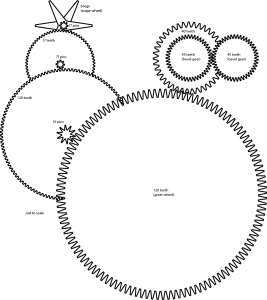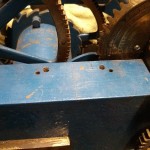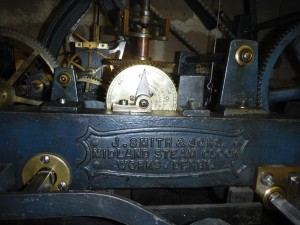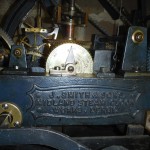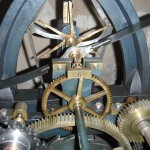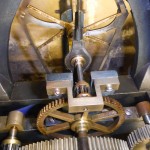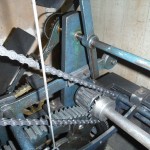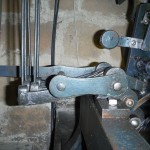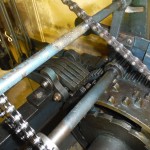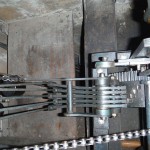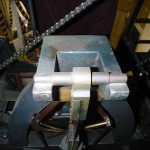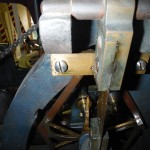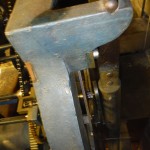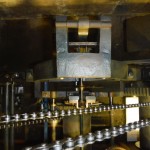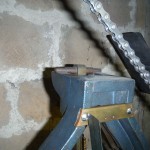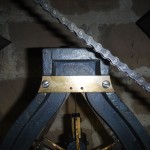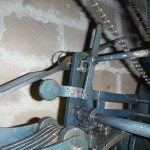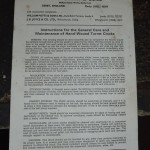After examining the St. Alkmund’s clock we are able to start making some progress again. However, as the going train isn’t exactly the same as ours, we still don’t have all the information we need. Some details still need to be worked out. It’s also worth noting that even if it had had the same as the parts that we currently have, there is no guarantee that our missing parts would have matched – the engineer at Smith of Derby said there was a lot of variation between clocks. We may never know exactly what the original train was on this clock, so we will have to go with something sensible.
Yesterday, my father discovered something interesting we had never noticed before. The missing front arbour support, for the missing arbour, was attached to the frame by two bolts. The same support on the clock at St. Alkmund’s is attached by one bolt. That may not sound very important, and it’s possible we are reading too much into it, but of all the pictures of Smith flat bed turret clocks of this vintage we can find there is only one other that has two bolts for this support. The other is the clock at Trinity Collage, Cambridge. That clock has an extra dial at the end of this arbour and a second hand – something else the Smith engineer mentioned our clock could/ should have had. It is the presence and position of the extra dial that requires the two side bolts for fixing the support, rather than a single bolt through a front “foot”. (I’ve previously mentioned how similar I though our clock was to the Trinity clock (except for their unique fourth train) and I did contact the keeper for more details about the clock, but unfortunately never received a reply.)
So, if we assume from this observation that our clock had a second hand then that fixes the rotation speed of the missing arbour to one rpm. As the lantern pinion at the front end of this arbour must turn the 120 tooth wheel at a rate of one tooth every seven and a half seconds then that pinion must have eight trundles. Suddenly we have two less unknowns in the train!
I previously suggested some options for the missing parts of the train, but if we take the above (60 second rotation, 8 pin pinion) as correct we can improve the list of options:
- 1.5 second swing, 60:9 ratio at escapement.
- 1.25 second swing, 72:9 ratio at escapement.
- 1.125 second swing, 80:9 ratio at escapement.
- 1 second swing, 90:9 ratio at escapement.
The engineer at Smith’s did suggest a 90:9 ratio, but I find it hard to imagine this clock only had a one second pendulum. That’s only about a metre, the same as a typical long case (“grandfather”) clock. The pendulum at St. Alkmund’s is 1.5 seconds or about 2.24m. The Trinity clock pendulum is described as being “2 metres” but it’s not clear how they are measuring it. The length of a pendulum is measured from the pivot to the centre of mass and so the overall physical length of the pendulum may be quite a bit longer. 2m is not a standard/ common length so I suspect it’s an approximation of the physical length rather than an accurate “functional length”.
As we’ll never know what this clock originally had we can choose one of the above options, keeping in mind the practicalities of the pendulum length. Only the 1 second pendulum would fit the clock on its current stand and would be the most convenient length, but that feels too short to me. The 1.5 second pendulum is far too long to be practical, so our current intention is to make it with a 1.25 second pendulum and 72:9 ratio. We just need to make sure that actually fits around the rest of the escapement mechanism.
